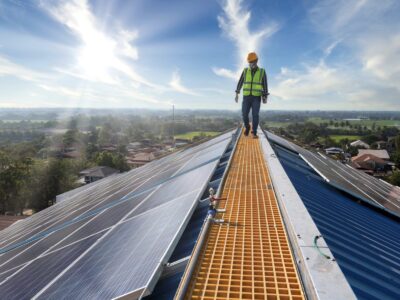Air ducts play an essential role in homes, but that doesn’t include conserving power. According to research from the University of Florida, typical systems cause the loss of up to 40% of a home’s heating or cooling energy. Leaky ducts make HVAC systems work much harder to heat or cool a home, which leads to higher utility bills.
Dr. Mark Modera set out to fix this problem in 1993 when he invented an aerosol-based sealing technology in his California garage. Modera, a researcher at the Lawrence Berkeley National Laboratory at the time, aimed to seal leaks and holes in air ducts from the inside out. Before then, most homeowners didn’t want to bother with sealing ductwork because of how complicated and labor-intensive the process is.
Modera made several attempts to commercialize the technology — including in collaboration with HVAC giant Carrier Corp. — but those attempts failed to gain much footing. Things changed in 2010, when Carrier spun out the technology, allowing Modera to launch a new company in partnership with heating and air industry veteran Amit Gupta. The company is Aeroseal, an Ohio-based climate tech firm.
Aeroseal’s technologies, called HomeSeal Connect and AeroBarrier Connect, inject a fog of sealant particles into a building’s walls and ducts to seal leaks as big as 5/8 of an inch and as small as a human hair. The systems include software that tracks the process before and after leakage occurs.
Gupta, who serves as Aeroseal’s CEO, says there are “100 million homes with ductwork that needs to be sealed.” That gives the company a very large target market. It also can benefit from a series of favorable trends, including a massive push by the U.S. government to decarbonize, increased adoption of heat-pump technology, and billions of dollars in government incentives to make homes more sustainable and energy-efficient.
“There are 8 million homes that get a new HVAC system every year,” Gupta said. “We want our technology to be in every HVAC truck so that every time your HVAC is replaced, you get a duct sealing.”
To reach that goal, Aeroseal needs funding to expand its operation. That’s what the company got in 2021 when it raised $22 million in venture capital from Bill Gates’s Breakthrough Energy Ventures, Energy Impact Partners, and Building Ventures. The round brought the firm’s total funding to $30 million. The money has been used to hire about 40 engineers and ramp up production at the company’s Dayton, OH, manufacturing facility.
As of late 2022, the company sold its technology to roughly 1,200 contractors and had it used in more than 200,000 homes and buildings. There’s a long runway of growth, considering that approximately 100,000 HVAC contractors operate in the U.S.
Contractors pay about $35,000 for Aeroseal’s technology packages. They include a portable device that uses software and sensors to determine the amount of leakage in air ducts. They also have a larger compressor installed in a truck or trailer that pumps the aerosol through plastic tubes. One advantage of the system is how quickly and efficiently it’s used.
To expand its business, Aeroseal plans to start renting its system to contractors in addition to selling it. The company is also designing a smaller device to blow the sealant through air ducts without a truck-mounted air compressor.
Another growth area is new homes, where Aeroseal works with major builders such as D.R. Horton, Lennar, and Beazer. Because new houses involve less work, the firm can do the job in about an hour at around $500. In contrast, sealing ducts in existing homes typically ranges between $1,500 and $2,500.





